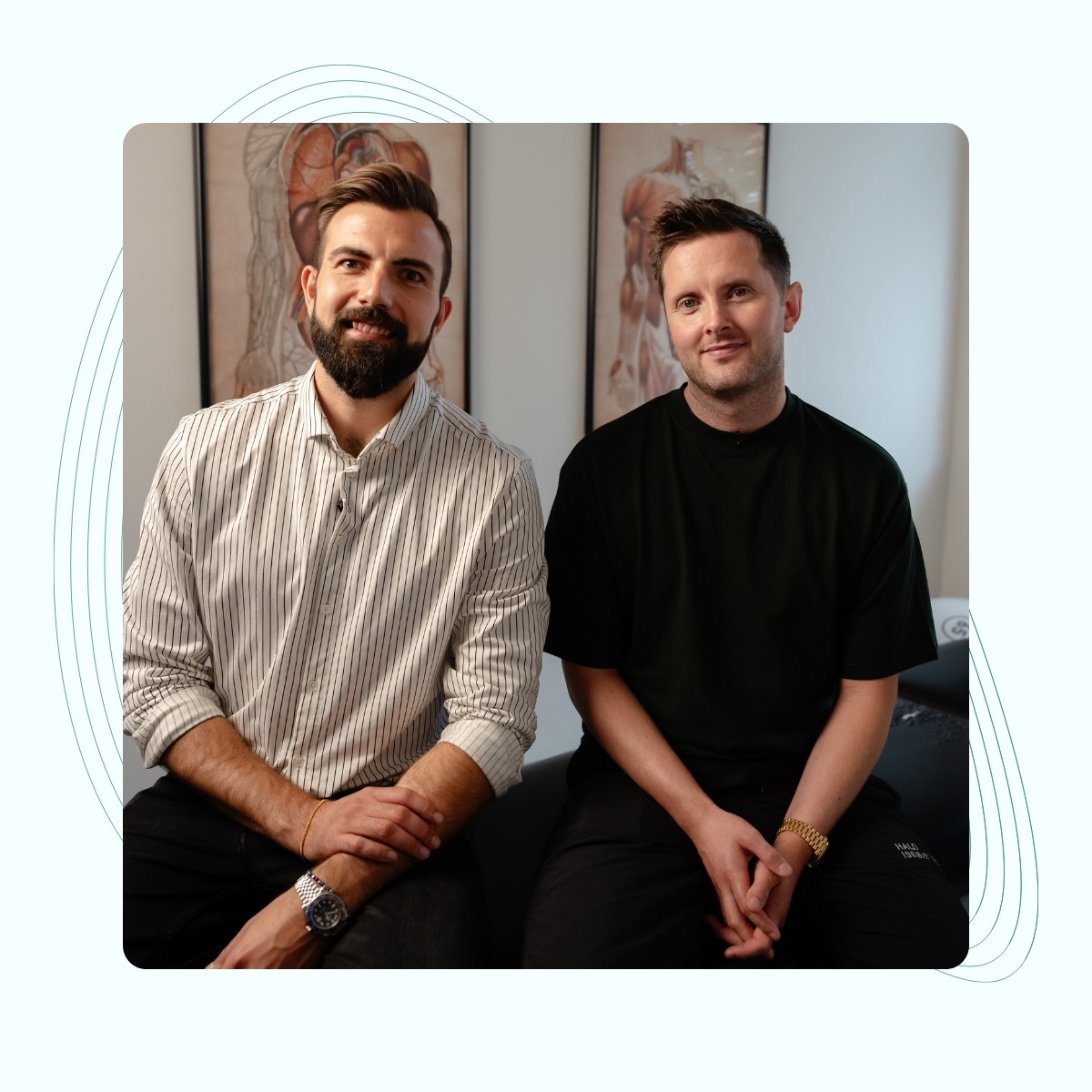We treat
Osteoarthritis
Learn more about osteoarthritis and its complications
Osteoarthritis
Osteoarthritis is a term for a degenerative joint disease, where the joint and its connective tissue are slowly destroyed and destroyed. Many people are bothered by pain and discomfort when walking or carrying something on a daily basis. The development of osteoarthritis starts with the cartilage in the joint becoming thin and uneven, but eventually the cartilage disappears completely. The joints themselves also deteriorate as the joint capsule thickens, resulting in more synovial fluid. This causes the joint to become thicker and more often forms swelling and inflammation.
Jump to section [Vis]
What is osteoarthritis?
Osteoarthritis is a joint disease in which the articular cartilage wears away. At the same time, there is thickening of the joint capsule and the adjacent bone, and the surrounding soft tissues are affected.
Osteoarthritis is a very common rheumatic disease in which the cartilage in the joints slowly breaks down. This can be caused by various things, for example, that the cartilage is exposed to too much stress, or that the cartilage is diseased and cannot withstand normal stress. Osteoarthritis has often been described as wear and tear, but this is misleading, as the cartilage needs stress to regenerate. Osteoarthritis is therefore better described as joint failure.
Osteoarthritis can affect people of all ages, but it occurs more frequently with age and is the most common cause of disability in older people.
In osteoarthritis, an imbalance occurs, so that the cartilage in the joint breaks down faster than it is built up. The cartilage becomes frayed and can crack, and later it can disappear completely, so that the bones slide directly on each other. It is not uncommon to have swelling and increased heat over the affected joint.
Early signs of osteoarthritis
An early sign of osteoarthritis may be that the joint is painful and stiff in the morning or after sitting still for a long time. Stiffness and reduced mobility can make it difficult to do things you used to be able to do, such as walking long distances, getting on a bus, tying shoelaces or putting on socks.
The diagnosis of osteoarthritis is often made using X-rays, but can also be made based on experienced symptoms and examination findings. It will always be symptoms and not X-ray findings that guide your treatment.

Osteoarthritis in the neck
The incidence of neck pain in adults is approximately 30-50% of the population. Osteoarthritis is considered a significant factor in, for example, the development of herniated discs and stenosis, which can cause problems with the nerve roots.
Symptoms of osteoarthritis in the neck
Symptoms of osteoarthritis in the neck are experienced as a grinding sensation in the neck, the neck often cracks and creaks, pain in extreme positions, morning stiffness and frequent tension headaches or cervicogenic headaches.
Osteoarthritis in the back
Osteoarthritis is one of the largest public health problems in the Western world. The incidence of back pain is 60-80% and the annual incidence is approximately 45%. Therefore, back problems are one of the biggest challenges in the healthcare system.
Of these, non-specific back disorders, including various forms of arthritis in the back, account for around 80-90% and nerve root involvement 5-10%.
Symptoms of osteoarthritis in the back
Symptoms of osteoarthritis in the back are often experienced as morning stiffness, pain upon starting, reduced mobility in the back, and pain at rest after physical exertion of the back.
Exercises for osteoarthritis in the back
Physical training for back pain has moderately good evidence of effectiveness against osteoarthritis of the back. However, the training should preferably be supervised by a physiotherapist who has specialist knowledge in rehabilitation and treatment of the back.

Osteoarthritis in the shoulder
Osteoarthritis of the shoulder can occur in any of the shoulder joints. Osteoarthritis of the large scapulohumeral joint is the most common joint, but degenerative changes can also occur in the sternoclavicular and acromioclavicular joints (the joints of the collarbone).
Symptoms of osteoarthritis in the shoulder
Osteoarthritis of the shoulder gradually causes a reduction in movement of the joint, with reduced abduction (lifting), external rotation and extension being the initial signs. Pain in different positions of the shoulder is also a sign of wear and tear in the shoulder.
Exercises for osteoarthritis in the shoulder
Before starting shoulder training, we recommend that dysfunctions and misalignments be examined by a shoulder expert. The shoulder is primarily stabilized by muscles and not by ligaments like most other joints, which is why problems in nerve and blood flow to and from the shoulder and shoulder muscles have a negative impact on the training itself and in most cases cannot simply be trained away.
Osteoarthritis in the wrist and fingers
Osteoarthritis of the wrist and fingers most often affects the wrist itself, the base and middle finger joints, and the base of the thumb. Osteoarthritis is most often unilateral, meaning only one hand at a time, with the dominant hand most often affected first.
Symptoms of osteoarthritis in the wrists and fingers
Osteoarthritis symptoms can often be confused with rheumatoid arthritis symptoms. One major difference is that osteoarthritis does not cause deformity of the joint, meaning that the joint does not change shape or appearance. Osteoarthritis of the hand and fingers is experienced intensely as the hand is involved in virtually all daily functions. Classic symptoms are stiffness in the morning that improves during the day and tenderness, swelling or pain at the end of the day that is related to the amount of work the hand does.
Exercises for osteoarthritis in the wrists and fingers
Research on osteoarthritis of the hand and fingers shows that osteoarthritis benefits from intensive training, for both strength, mobility and stability. Here at the clinic we have specialists in the treatment of hands and fingers with osteoarthritis.

Osteoarthritis of the hip
Osteoarthritis of the hip is a condition that occurs frequently in the population.
The hip joint is a central joint in the body in relation to walking and running. All load through it must be redistributed from the legs and up into the rest of the body through the hip joint. Therefore, wear and tear on the cartilage in the hip joint is disabling for people affected by osteoarthritis in the hip.
Symptoms of osteoarthritis of the hip
Symptoms of osteoarthritis of the hip come on gradually and get worse as the cartilage in the hip joint is degeneratively destroyed. Symptoms such as stiffness in the hip, reduced extension (stretching backwards) and reduced internal rotation are the first symptoms. Gradually, flexion (bending of the hip), pain at rest, night pain and pain when bearing weight join the symptoms. Eventually, the patient shifts his weight to the other leg and becomes limp when walking.
Exercises for osteoarthritis of the hip
Exercises for osteoarthritis of the hip should involve hip range of motion training as well as strength training of the muscles around the hip joint. Muscles related to the hip joint originate from the lower back.
Osteoarthritis of the knee
Osteoarthritis of the knee is the most common of all rheumatic disorders.
Over 6% of the population has osteoarthritis in the knees and over 45% for people over 80 years of age.
The knee is a joint located between two stabilizing areas of the body, the pelvis/hip and the ankle. Therefore, the knee is dependent on good mobility and functional level in these areas.
Symptoms of osteoarthritis in the knee
Osteoarthritis of the knees is primarily experienced as pain. This pain is often associated with morning stiffness, reduced mobility in the knee and locking of the knee joint. Activities that involve increased weight-bearing are the worst, such as running, jumping, lifting, etc. In most cases, swelling or fluid is also experienced in the knee. Morning stiffness and difficulty starting are also frequent in the symptom picture.
Exercises for osteoarthritis of the knee
As previously mentioned, the knee is always dependent on other regions for mobility and function. These areas are the lower back, pelvis and ankle. Training should initially be supervised by an expert in osteoarthritis of the hip joint.

Osteoarthritis of the ankle and foot
Osteoarthritis can also affect the areas around the foot and ankle. Here, all joints between the metatarsal bones, toes and the ankle joint (talocrural joint) can be affected. Osteoarthritis of the ankle and foot is very disruptive to patients’ everyday lives as this area is constantly affected during the day by activities such as walking, running, standing and so on.
Symptoms of osteoarthritis in the ankle and foot
Symptoms of osteoarthritis in the ankle and foot are experienced as deep, cutting pain when weight is placed on the foot and ankle. The symptoms in the early stages may disappear when the area is warmed up, but later the symptoms will gradually worsen when weight is placed on the ankle and foot. Osteoarthritis in the ankle and foot can affect and lead to the development of other disorders in the region such as heel spurs, Achilles tendonitis and inflammation of the plantar fascia.
Exercises for osteoarthritis of the ankle and foot
Exercise for osteoarthritis in the ankle and foot should be approached with caution. The ankle and foot are already subject to heavy loads on a daily basis. Osteoarthritis in the joints causes inflammation that makes the foot and ankle sensitive to weight bearing and strain.
Causes of osteoarthritis
The exact causes of osteoarthritis are still unknown.
However, it is assumed that the causal relationships are multifactorial, with genetics, wear and tear, obesity and other lifestyle diseases, various rheumatic diseases, poor blood flow and incorrect postures being some of the culprits.
The structure affected by osteoarthritis is the cartilage that covers the bones. Cartilage does not have a proper blood supply but is regenerated through diffusion of the fluid that is in the joint (synovial fluid). This fluid is replaced regularly through the circulation and blood flow around the joint.
Problems here can therefore affect the joint’s recovery.
A joint that is stiff and does not move optimally develops tissue changes in the joint capsule around the joint. This also leads to poorer blood supply to the joint and therefore impairs the diffusion of the cartilage.
Previous trauma to the joint can cause stiffness and restricted movement of the joint itself.

Symptoms of osteoarthritis
Osteoarthritis affects everyone throughout their lives, but about 8 out of 10 people experience symptoms from osteoarthritis. Many who have had an X-ray that shows osteoarthritis have few or no symptoms.
Therefore, there is not always a correlation between the detection of osteoarthritis or the degree of X-ray changes and pain. When osteoarthritis is found to cause symptoms, it is most often experienced with pain. This pain is often worst during activity, especially during weight-bearing activities.
There is usually an initial pain, including discomfort in the morning, which gradually improves when the joint is warmed up. However, osteoarthritis pain often returns when activity is stopped and the joint is at rest.
Osteoarthritis medication
There are a number of medications used to treat osteoarthritis. However, it is important to note that these medications cannot cure the causes or consequences of osteoarthritis and that all medications have side effects that you should read before using them.
In mild cases of osteoarthritis, paracetamol can ease or eliminate the symptoms. In severe cases, paracetamol is combined with NSAIDs.
NSAIDs have antipyretic and anti-inflammatory effects, but there is research that shows that NSAIDs have a short-term effect and can lead to increased inflammation later in the process. In the most severe cases of osteoarthritis, the use of corticosteroid injections may be considered. This is often the last resort and actually the last stage before surgery.
We consider the human being as a whole and strive to optimize the body’s own conditions and resources with the aim of reducing the consumption of medication for osteoarthritis pain.

Differential diagnoses for osteoarthritis
Osteoarthritis is just one of many conditions that can affect our joints.
There are other rheumatic diseases such as rheumatoid arthritis, reactive arthritis, psoriatic arthritis, ankylosing spondylitis, spinal stenosis, spondylarthrosis, gout, etc.
However, there is a classic difference between osteoarthritis and most other rheumatic diseases, which is that osteoarthritis breaks down the joint through wear and tear combined with other factors, while most other rheumatic diseases are triggered by errors in the immune system. This means that the immune system attacks its own joints and gradually breaks down the joints.
Osteoarthritis and work
Osteoarthritis often hinders optimal and efficient working life.
Every second person who suffers from osteoarthritis is plagued by pain at work.
This applies to both people who perform hard physical work as well as sedentary and, on paper, not physically demanding work.
Here, their pain conditions frequently end up in a chronic course, especially if working positions, tasks, and so on cannot be optimally handled.

Surgery for osteoarthritis
Surgery for osteoarthritis or exercise. This is the most frequent question that concerns people suffering from osteoarthritis.
The answer to the question is not clear and unambiguous, as it concerns human well-being. The key advice is that surgery is an absolute last resort and that the discomfort caused by osteoarthritis is great and disabling.
If in doubt, you can evaluate various factors.
How severe are osteoarthritis changes measured by X-ray or MRI scan? How disabling is osteoarthritis in relation to working life? How many everyday tasks does osteoarthritis prevent you from performing? How much does osteoarthritis pain affect your sleep? How does osteoarthritis affect the psyche? Does osteoarthritis affect your private life?
If some or many of these considerations are affected by osteoarthritis pain, there are ways to manage the osteoarthritis itself.
What can you do yourself for osteoarthritis?
First and foremost, our experience here at Osteonordic and Physiotherapy is that the causes of osteoarthritis must be identified and treated. Here at the clinic, we are specialists in precisely this.
-
- Training and exercise; training is an important factor in the prevention and treatment of osteoarthritis. Muscle strength around the joint and optimization of circulation support the positive physiology of the joint. The physiotherapist can individually tailor an exercise program that suits you individually.
-
- Overweight / lose weight; weight should always be reduced as this is one of the major causes of osteoarthritis. Weight is an extra burden on weight-bearing joints and bones. Therefore, weight loss is essential in osteoarthritis management.
-
- Healthy diet; diet also plays a role in the development and management of osteoarthritis. There is some evidence that anti-inflammatory diets, acid/base diets, and ketogenic diets reduce rheumatological factors that can contribute to the development of arthritis.
-
- Sleep and reduced stress; increased stress and lack of sleep are huge factors that contribute to inflammation in our bodies. Therefore, reducing stress and taking care of sleep must be included when we talk about managing osteoarthritis.
Osteopathic approach to osteoarthritis
We specialize in diagnosing and treating the causes of osteoarthritis. Our team treats everything related to the human body; the skeleton, blood vessels, nervous system, immune system, organs, hormone system, etc.

Often related problems
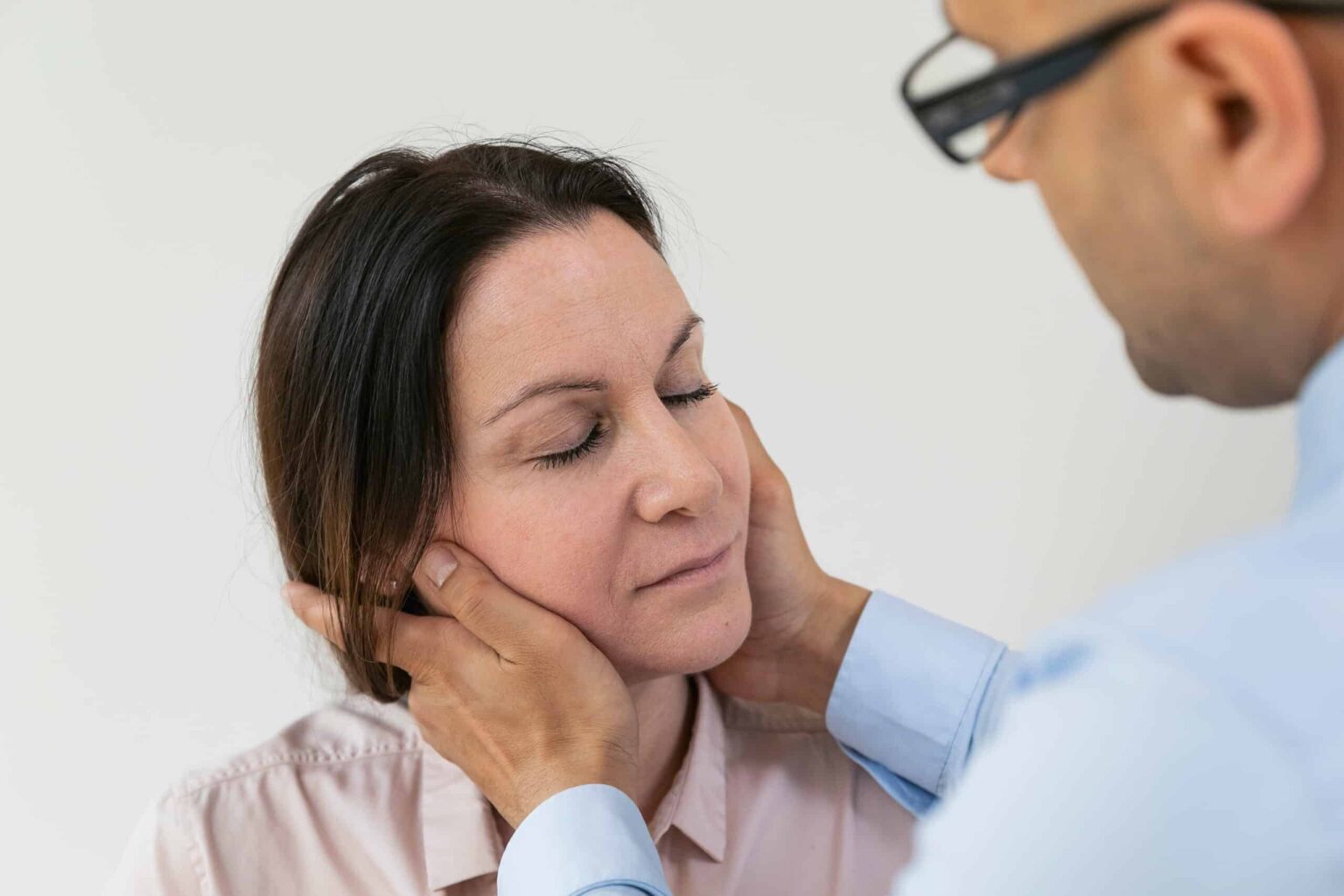
Jaw joint pain
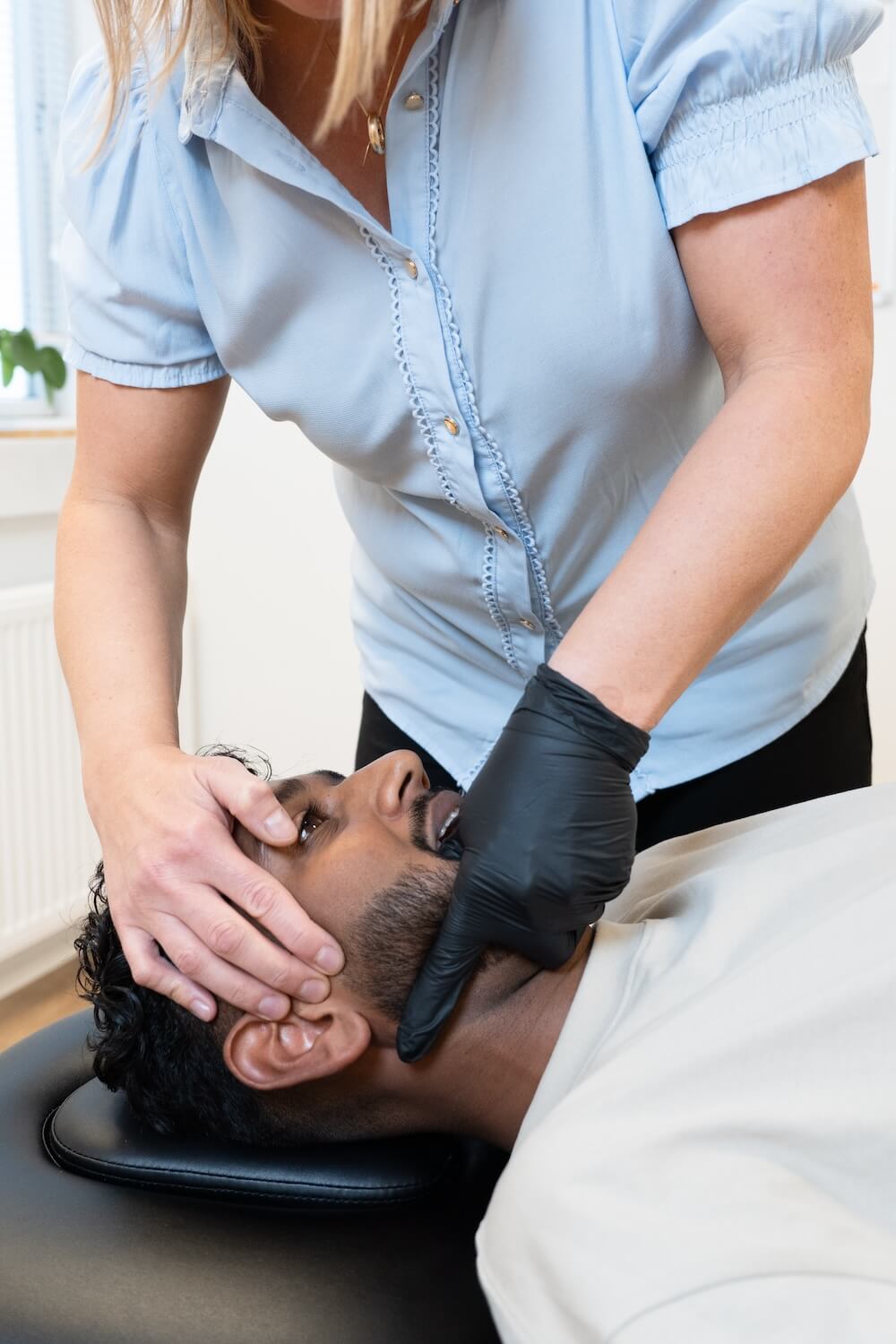
Kissing disease
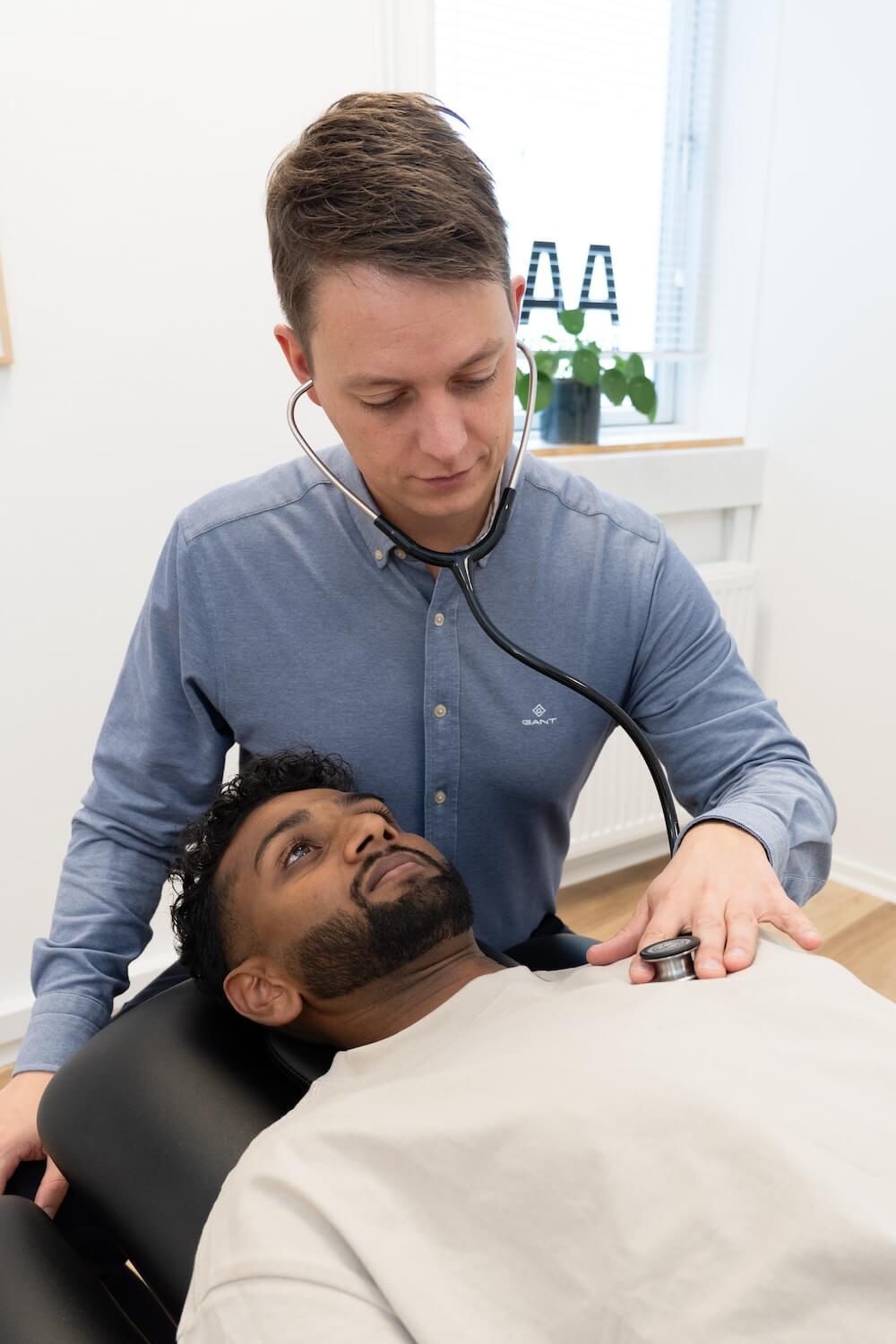
Diabetes mellitus
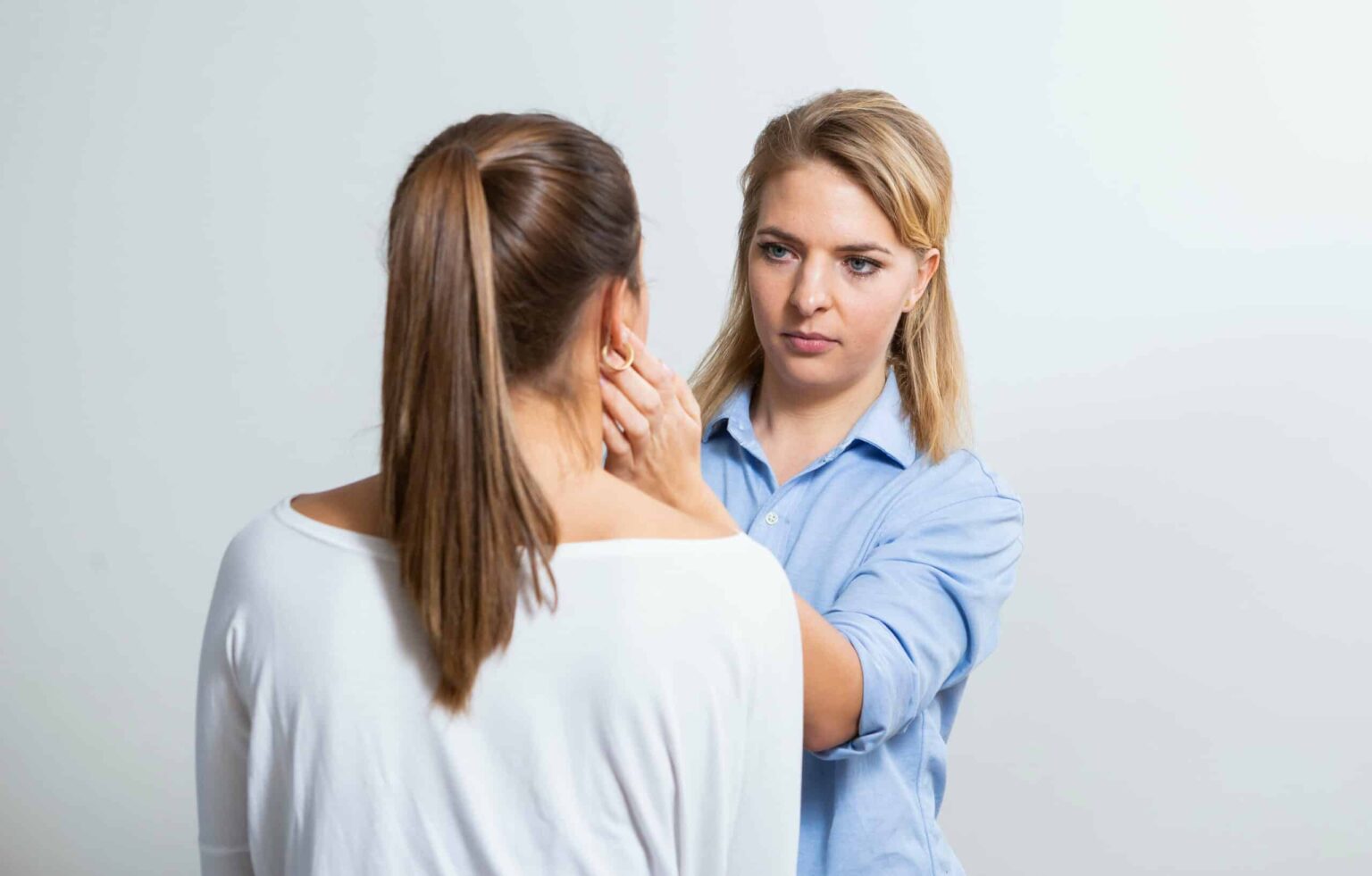
Eye inflammation
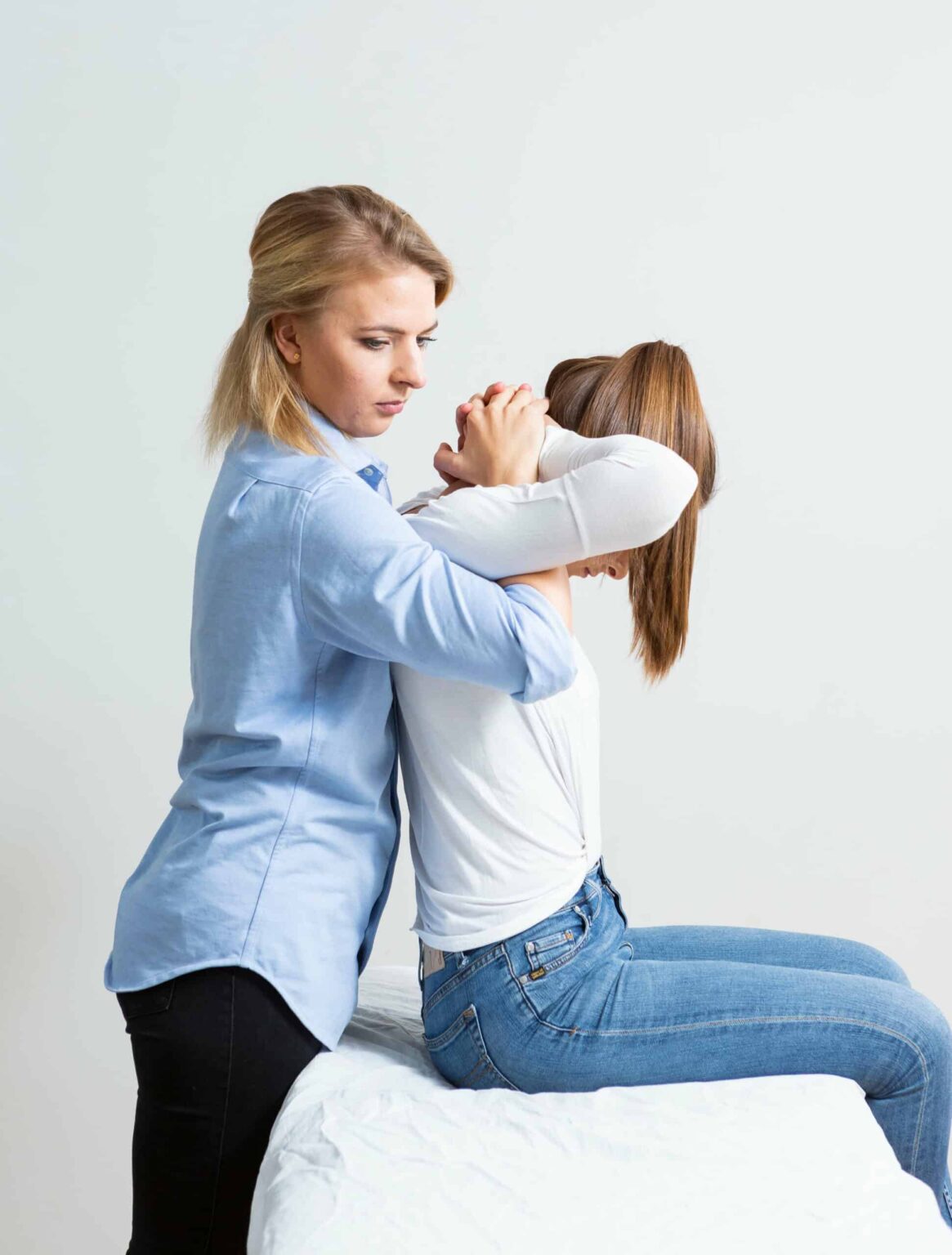
Padel injuries

Sedentary work
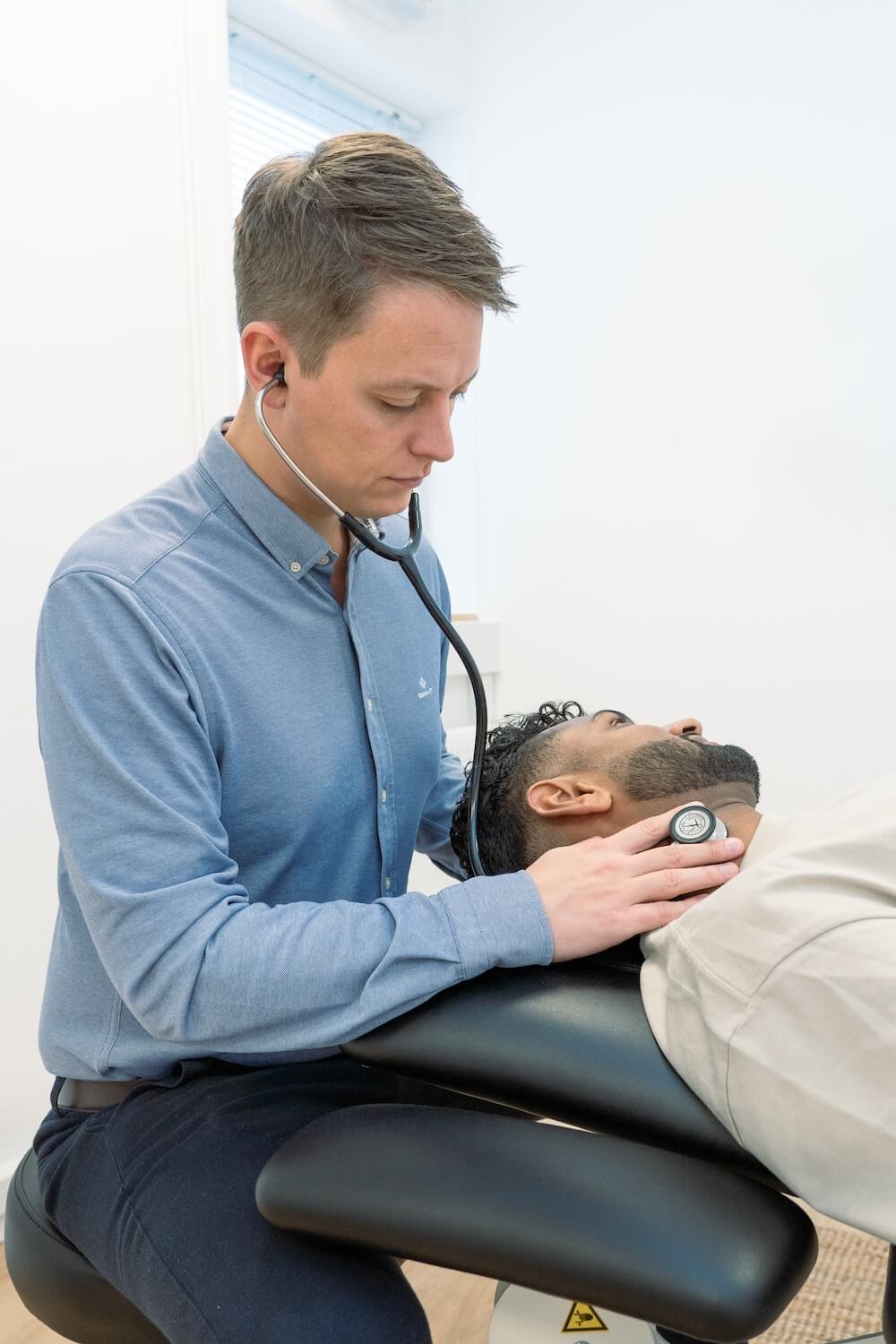
Nicotine and exercise

